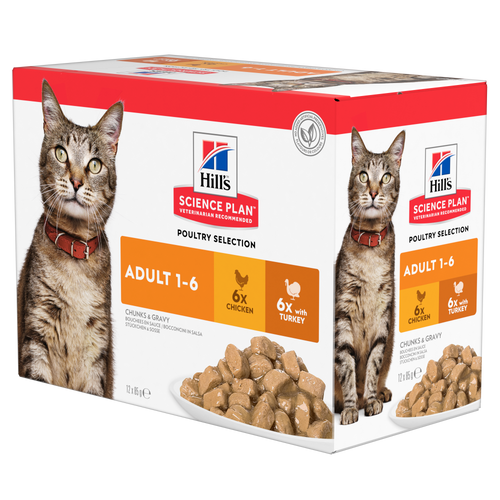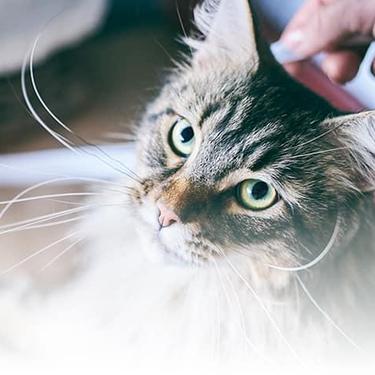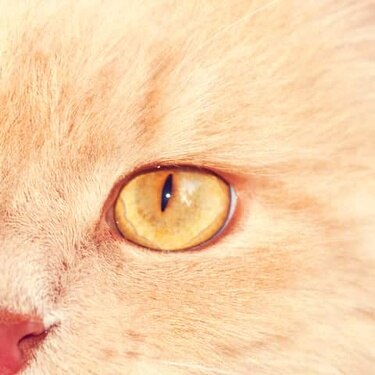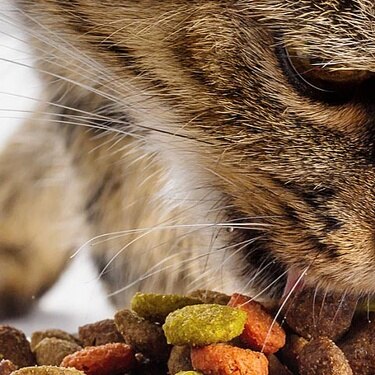
-
Find the right food for your petTake this quiz to see which food may be the best for your furry friend.Find the right food for your petTake this quiz to see which food may be the best for your furry friend.Featured products
 Mature Adult Dog Food
Mature Adult Dog FoodHill's Science Plan Mature Adult Multipack Wet Dog Food with Chicken & Beef are complete premium pet foods for mature adult dogs from 7 years. Your dog will love these deliciously smooth and savoury minced loaves, formulated to deliver the appropriate amount of energy to support the needs of adult dogs.
Shop Now Puppy Food
Puppy FoodHill's Science Plan Puppy Multipack Wet Dog Food with Chicken & Beef are complete premium pet foods for growing puppies from weaning until 1 year old and for pregnant and nursing dogs. Your puppy will love these deliciously smooth and savoury minced loaves, formulated for balanced nutrition and overall health.
Shop Now Adult Wet Dog Food with Beef
Adult Wet Dog Food with BeefHill's Science Plan Adult Multipack Wet Dog Food with Chicken, Beef & Turkey are complete premium pet foods for adult dogs from 1 year. Your dog will love these deliciously smooth and savoury minced loaves, formulated for balanced nutrition and overall health.
Shop NowFeatured products Adult Multipack Wet Cat Food with Beef, Ocean Fish & Chicken
Adult Multipack Wet Cat Food with Beef, Ocean Fish & ChickenTender chunks in gravy for cats, with high-quality protein to maintain lean muscle. With vitamin E and omega-3s & -6s for healthy skin and balanced minerals to support healthy vital organs.
Shop Now Light Adult Multipack Wet Cat Food with Chicken & Ocean Fish
Light Adult Multipack Wet Cat Food with Chicken & Ocean FishTender chicken chunks in gravy for cats, with L-carnitine and fewer calories for ideal weight management. Packed with high-quality protein, omega-6s, and vitamin E for shiny fur and healthy skin.
Shop Now Mature Adult Wet Cat Food with Chicken
Mature Adult Wet Cat Food with Chicken
Tender chicken chunks in gravy for mature adult cats. Made with easy-to-digest ingredients, high-quality protein for lean muscle maintenance and antioxidant vitamins C+E for optimal health.
Shop Now -
Dog
- Dog Tips & Articles
-
Health Category
- Weight
- Food & Environmental Sensitivities
- Urinary
- Digestive
- Joint
- Kidney
-
Life Stage
- Puppy Nutrition
- Adult Nutrition
- Senior Nutrition
Cat- Cat Tips & Articles
-
Health Category
- Weight
- Skin & Food Sensitivities
- Urinary
- Digestive
- Kidney
-
Life Stage
- Kitten Nutrition
- Adult Nutrition
Featured articles Show some love with wet foods: a great choice for pets with health issues
Show some love with wet foods: a great choice for pets with health issuesShow some love with wet foods: a great choice for pets with health issues.
Read More The Incredible Science Behind Your Pet's Microbiome
The Incredible Science Behind Your Pet's MicrobiomeLearn what your pet's microbiome is, how it contributes to your pet's gut and overall health, and why nutrition is important in maintaining healthy microbiomes.
Read More The Right Diet For Your Pet
The Right Diet For Your PetIn people, the right diet is very important. If you are eating the wrong way for your metabolism, activity level, age and lifestyle you could end up with health issues.
Read More -


Like people, cats can get constipated from time to time, and it’s not pleasant for us or them. It can be tricky to spot if your cat has a tummy upset or intestinal problem, especially if they go outside to go to the toilet, but there are usually some telltale signs you can look out for.
What is constipation?
Constipation is basically the opposite of diarrhoea. The poo gets dried out, hard and difficult to pass. This can be very uncomfortable and, if it goes on for some days, it can make cats feel really unwell and miserable.


Tasty Tips
Common causes of constipation in cats
Cats are usually pretty low-maintenance pets, but there are several things that can cause constipation. Let’s look at what those things might be and how to spot when it’s an issue.
Dehydration. Cats have evolved from ancestors that live in hot, desert-type places, so they’re very good at conserving the water in their bodies. This means they tend not to drink very much, which can lead to dehydration and dryer stools.
This is even more likely to happen in situations like a multi-cat house, where one cat might not have equal access to the food and water due to a resident bully. To make sure your cat stays hydrated, place several water bowls around the house so that they have water freely available wherever they are. At a minimum, ensure that there is one more water bowl than the number of cats in the home.
Lots of cats are fed dry food for convenience these days, which can reduce their normal water intake. Feeding wet food, such as pouches and tins, is a great way to ensure your cat gets plenty of fluids.
Swallowing hair. Cats love to groom and spend about 30-40% of their waking time tending to this important job. While some cats that ingest a lot of hair might vomit up a furball or two, some hair may go all the way through and clog up the other end.
Injuries and pain. Injuries such as pelvic fractures may physically narrow the passage where the large bowel sits, making it difficult for the cat to pass stools. Also, as cats get older and their joints get stiffer, they may find that squatting is painful. They might avoid going to the toilet as often, allowing the poo to dry out too much.
Tumours. Some tumours in the bowel area can block stools from passing through, either by pressing up against the bowel from the outside, or taking up space inside.
Nerve problems. The contents of the intestines are moved from one end to the other by waves of muscular contractions called peristalsis. It happens automatically, without us ever having to think about it. Some cats get nerve problems that might hinder this. Some breeds of cat, such as the Siamese, are more prone to this. It can cause something called megacolon, where the colon becomes very slack and dilated.
Other diseases. Some other diseases, such as kidney disease, can cause dehydration, which can then lead to constipation.
Obesity and lack of exercise. Obesity and lack of exercise can cause constipation because exercise stimulates the bowel to move.
How do you know when your cat is constipated?
It might not alway be easy to tell if your cat’s digestive system isn’t working the way it should. Vomiting and diarrhoea are obvious, but constipation can be much harder to spot.
Things to look out for:
If your cat uses a litter tray, watch for changes in frequency and consistency. If you notice you suddenly don’t have to empty the tray as much, or if the stools seem different in size or appearance (hard or crumbly), it could be a sign that things are backing up.
Watch for straining or vocalisation. If your cat seems to be crying out or spending ages in the tray without success, then you should see your vet as soon as possible. This could be a sign of constipation that needs addressing, but it can also be a sign of cystitis or a blocked bladder, which are medical emergencies.
Watch for your cat pooing in the wrong place. If your cat is in pain or finding the litter tray difficult, or is reluctant to go outside to poop, they may be constipated.
General malaise. Constipation makes cats feel pretty miserable, just like us. Sometimes, the only sign of your cat being constipated is that they seem off-colour. They may seem lethargic and uninterested in play or company.
Hopefully, your cat will sail through life with happy bowels, but if you’re ever concerned there might be a problem, always talk to your vet. They would much rather be on the safe side and catch a problem before it gets too bad. It might be that a simple change of food is needed to give your cat more fibre or more moisture, but if there is an underlying disease, the sooner you find out, the better.
Reviewed by Dr. Hein Meyer, DVM, PhD, Dipl-ECVIM-CA


One of our staff authors prepared this article for you
Related products

Tender chicken chunks in gravy for cats, with L-carnitine and fewer calories for ideal weight management. Packed with high-quality protein, omega-6s, and vitamin E for shiny fur and healthy skin.


Tender chunks in gravy for cats, with high-quality protein to maintain lean muscle. With vitamin E and omega-3s & -6s for healthy skin and balanced minerals to support healthy vital organs.

Tender chicken chunks in gravy for mature adult cats. Made with easy-to-digest ingredients, high-quality protein for lean muscle maintenance and antioxidant vitamins C+E for optimal health.
Related articles

Learn how to make homemade cat treats that are healthy for your pet with this recipe from Hills Pet Nutrition.

Chocolate is known to be poisonous for dogs, but it can also be toxic for cats. Learn why chocolate is bad for cats & what to do if she's eaten it.

There are three common ways to feed a cat. Each way has its advantages and disadvantages.

From essential vitamins & minerals to different types of meat, learn what to look for when choosing the best cat food for your feline.

Put your cat on a diet without them knowing
Our low calorie formula helps you control your cat's weight. It's packed with high-quality protein for building lean muscles, and made with purposeful ingredients for a flavourful, nutritious meal. Clinically proven antioxidants, Vitamin C+E, help promote a healthy immune system.
Put your cat on a diet without them knowing
Our low calorie formula helps you control your cat's weight. It's packed with high-quality protein for building lean muscles, and made with purposeful ingredients for a flavourful, nutritious meal. Clinically proven antioxidants, Vitamin C+E, help promote a healthy immune system.

